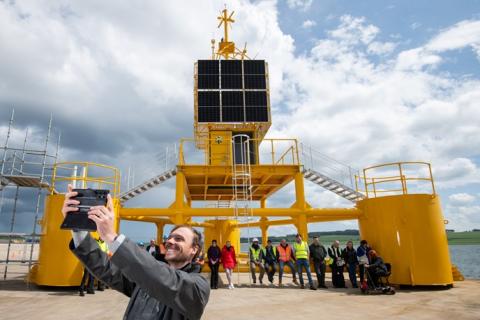
5G buoys to launch from Dundee harbour will help fight ‘hostile’ attacks on UK energy network
Jet Connectivity designed floating 5G devices which provide wireless connectivity for off-shore wind farms.
A floating 5G base station was tested at Dundee Port as part of a Tay Cities Region Deal Tay5G pathfinder project. The project is led by Jet Connectivity who are also working with the Scottish Government, Scotland 5G Centre and Dundee City Council. The technology has the potential to transform communications in the North Sea and beyond. The demonstration follows on from a drone trial in Angus which used the same technology to create a moving 5G-enabled search bubble for use in mountain rescue environments.
"Platforms 22 metres tall and 33 tonnes heavy are under construction at Port of Dundee, which will be fitted with 5G devices before being sent out to sea. These will allow communications from wind farms and off-shore platforms without having to rely on old radio signals, or fibre optic cables — which can be vulnerable to attack from “hostile” countries."
"The hope is this technology can be used for a number of maritime applications, including using drones to inspect turbines, checking wave and wind conditions in real-time and reduce health and safety risks by limiting the frequency people are put out to sea."
Read the fully story by Paul Malik at the Courier.

James Thomas, CEO of Jet Connectivity, takes a selfie at Port of Dundee in front of the massive 5G buoy which was built there. Image: Alan Richardson/ Pix-AR

Staff testing the drone technology at Port of Dundee, in front of the 5G buoy. Image: Alan Richardson/ Pix-AR
